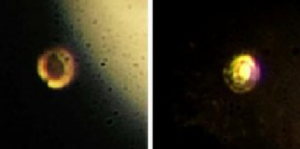
A sample of metallic hydrogen that was created by researchers at Harvard last month has gone missing inside the lab. Scientists said they have no idea whether the sample is present somewhere inside the lab or if it degraded in the past few days.
Last month, scientists from Harvard University announced that they have got success in creating metallic hydrogen. The new material was formed when scientists squeezed hydrogen so intensely that it changed to attain a metallic form, which according to scientists, might work as highly efficient electricity conductor at room temperatures.
In 1935, physicists Eugene Wigner and Hillard Bell Huntington had proposed a theory hydrogen gas, under extreme pressure, could change its form to attain metallic state. Since then several teams of scientists have been trying to develop metallic hydrogen, which could serve as a superconductor.
Superconductors are currently used in a variety of applications, for example, in magnetic resonance imaging machines and need to be cooled with liquid helium to keep them at extremely low temperatures.
“This is the holy grail of high-pressure physics,” Harvard physicist Isaac Silvera, one of the study’s authors, said at that time.
“It’ the first-ever sample of metallic hydrogen on Earth, so when you’re looking at it, you’re looking at something that’s never existed before.”
In their experiments, Silvera and Ranga Dias (post-doctoral fellow) squeezed hydrogen sample at more than 71.7 million pounds per square inch (32.5 million kg per 6.5 square cm. That was a huge amount of pressure, even greater than the pressure at the center of the Earth. The pressure was created using synthetic diamonds mounted opposite each other in a diamond anvil cell. A special process was used to treat the diamonds to avoid cracking in them.
According to Harvard scientists, the sample was enclosed in a diamond vice under almost absolute zero conditions, but now it has disappeared.
“It’s either someplace at room pressure, very small, or it just turned back into a gas,” said Isaac Silvera, natural sciences professor at Harvard who is also one of the researchers involved in the experiment.
Scientists said they might repeat the experiment to create another sample of metallic hydrogen.
Silvera said that the metallic hydrogen could find application in everything from our electrical grid to hospital MRI machines.
